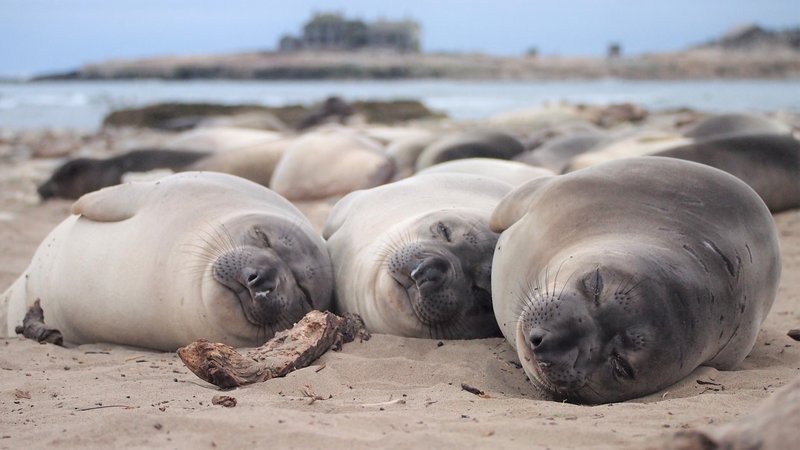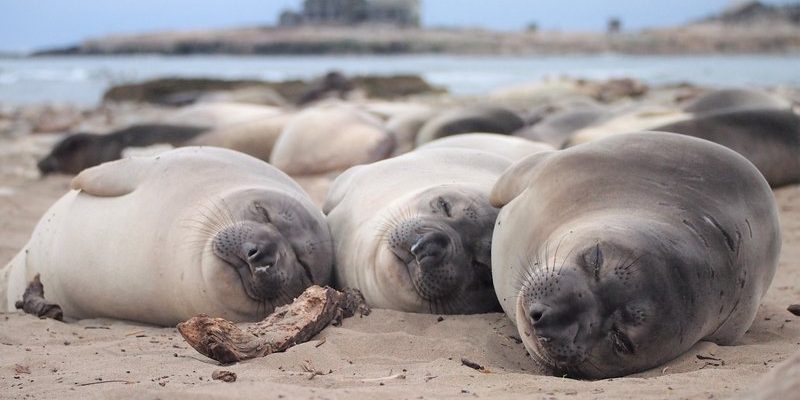
Imagine taking a stroll along the coastline, the salty breeze blowing through your hair, when suddenly you spot a colony of elephant seals basking in the sun. It’s an awe-inspiring moment. But getting too close could lead to potentially dangerous encounters. So, how do we appreciate these magnificent beasts without putting ourselves or them at risk? Here’s the scoop on interacting with elephant seals and what you need to know.
Understanding Elephant Seals
Elephant seals, particularly the Northern and Southern species, are massive animals that can weigh anywhere from 800 to 5,000 pounds! That’s a lot of blubber. They spend most of their lives in the ocean, only returning to shore to breed, give birth, and molt. While they look calm and relaxed when they’re lying on the beach, it’s essential to remember that these creatures are wild animals, and they can be surprisingly agile despite their size.
When you see them on land, they might seem like they’re just lounging around, but they can actually be quite territorial, especially males during the breeding season. Imagine a grumpy uncle at a family gathering—if you invade his personal space, he might not take it lightly! That’s a bit how a male elephant seal might react if you get too close.
The Importance of Respecting Their Space
Respecting the personal space of elephant seals is crucial. Approaching them can cause undue stress and lead to aggressive behavior. The general rule of thumb is to maintain a distance of at least 100 yards (about the length of a football field) when observing these animals. This space allows you to enjoy their beauty without compromising their well-being.
Most coastal areas where elephant seals gather have established viewing areas and guidelines to help you enjoy the sight safely. Following these guidelines is not just a suggestion; it’s a way to ensure both humans and seals can coexist peacefully.
When is it Safe to Interact With Elephant Seals?
You might be wondering, “When is it safe to get closer to these massive creatures?” The answer is pretty straightforward: it’s usually best to admire them from a distance. However, there are specific times, like educational tours or organized viewing events, where interactions are more controlled and safe.
During these events, there are often trained guides who can explain the seals’ behavior and ensure everyone maintains a safe distance. This way, you get to learn about the seals without risking a close encounter that could lead to a rush of adrenaline—yours, not theirs!
Seasonal Considerations
The safety of interacting with elephant seals largely depends on the time of year. The breeding season, from late December to early March for Northern elephant seals, can be particularly tense. Males are aggressive while competing for mates, and females are protective of their pups. Observing during this period calls for extra caution, as the seals may not take kindly to any perceived threats.
In contrast, the molting season, which occurs in the summer, is a quieter time for the seals. However, even during this period, giving them space is still essential. Their primary goal is to rest and recover, and they need peace to do that.
How to Safely Observe Elephant Seals
If you want to watch elephant seals without getting too close, here are some helpful tips:
- Use binoculars: They let you get a closer look without intruding on the seals’ space.
- Stay on designated paths: Many beaches have specific areas for viewing wildlife. Stick to these paths to minimize disturbance.
- Follow guidelines: Pay attention to signs and instructions from park rangers or guides.
- Be patient: Sometimes, the best experiences come from simply waiting and watching the seals in their natural behavior.
By following these tips, you can enjoy the breathtaking sight of elephant seals while ensuring their safety and yours.
Photography Tips for Capturing Moments
If you’re keen on capturing stunning photographs of elephant seals, here are some pointers to keep in mind:
- Zoom in: Get a good camera with a zoom lens. This way, you can take close-up shots without needing to approach the seals.
- Golden hour: Try to shoot during the early morning or late afternoon for the best natural light.
- Respect the seals: Always prioritize their comfort over getting the perfect shot. If they seem stressed, it’s best to back off.
Photography can be a great way to remember your experience without compromising the seals’ safety.
Common Misconceptions About Elephant Seals
There are plenty of myths about elephant seals that can lead to misunderstandings. One of the biggest misconceptions is that elephant seals are aggressive all the time. While they can be territorial, particularly during mating season, they spend a significant amount of their lives resting and are not naturally aggressive towards humans.
Another common myth is that they’re just big, lazy animals. While they do enjoy lounging on the beach, they’re skilled divers that can hold their breath for over an hour while hunting for food in the ocean. It’s like thinking of a couch potato who can also be a marathon runner!
Debunking the Myths
It’s essential to fully understand these creatures to appreciate them better. Instead of fearing their size or imagining danger at every turn, embracing knowledge helps us interact safely. Educating ourselves about their behavior, habits, and needs creates a more harmonious relationship between humans and elephant seals.
Conservation efforts also play a vital role in preserving these magnificent animals. By taking the time to learn and promote awareness, we can ensure that future generations will also get to experience the joy of observing these giant mammals.
Final Thoughts on Human and Elephant Seal Interactions
Interacting with elephant seals can be a rewarding experience, but it’s crucial to do so safely and respectfully. By understanding their behavior, respecting their space, and following guidelines, we can admire these incredible creatures while keeping ourselves and them out of harm’s way.
Whether you’re gazing at them from a distance, capturing their beauty in photographs, or simply immersing yourself in the beauty of coastal nature, the key is always to remain mindful of their needs. So next time you find yourself near a colony of elephant seals, remember: you’re a visitor in their world. Enjoy the experience, but let those seals be seals—after all, they’ve been doing this long before we ever showed up!

